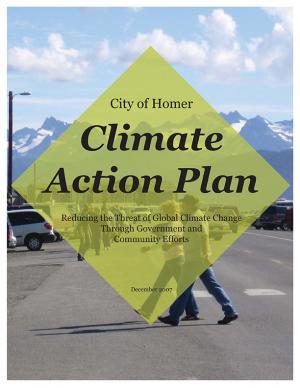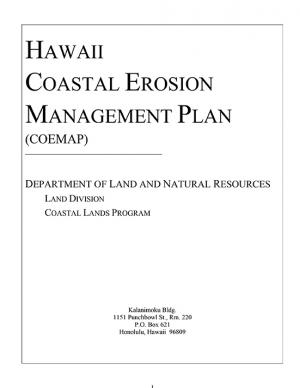Access a range of climate-related reports issued by government agencies and scientific organizations. Browse the reports listed below, or filter by scope, content, or focus in the boxes above. To expand your results, click the Clear Filters link.
In February of 2007, Governor Sanford of South Carolina established the Governor’s Climate, Energy, and Commerce Committee to develop a Climate, Energy, and Commerce Action Plan containing specific recommended actions for mitigating greenhouse gas emissions. This document is the committee's action plan, which documents its recommendations and associated analyses to reduce greenhouse gas emissions and enhance energy and economic policy in South Carolina by 2020 and beyond.
Ted Kulongoski, Governor of Oregon from 2003–2011, selected the Climate Change Integration Group (CCIG) to develop a framework for making informed decisions to minimize the more extreme impacts of climate change. Kulongoski wanted the CCIG to create a strategy for Oregon to apply the measures from the 2004 Oregon Strategy for Greenhouse Gas Reductions. In this report, the CCIG proposes that Oregon takes steps toward developing a framework that will assist individuals, businesses, and governments to incorporate climate change into their planning processes.
Vermont's Governor James Douglas established the Governor’s Commission on Climate Change by executive order on December 5, 2005. The state's goal, as outlined in this document, is to reduce its greenhouse gas emissions by 25 percent from 1990 levels by 2012, 50 percent by 2028, and 75 percent by 2050.
In 2006, Minnesota Governor Tim Pawlenty announced the “Next Generation Energy Initiative,” which included the “development of a comprehensive plan to reduce Minnesota’s emissions of greenhouse gases.” During this announcement, the governor requested that the Center for Climate Strategies help in the development of Minnesota's Climate Mitigation Action Plan and the formation of the Minnesota Climate Change Advisory Group. The Climate Change Advisory Group, which was tasked with developing a comprehensive set of state-level policy recommendations to the governor, produced this report.
This plan—the first in Alaska—was developed by Homer's Global Warming Task Force and includes an inventory of greenhouse gas emissions from city facilities and community-wide, sets targets for reduction, and presents strategies for reducing emissions.
The Montana Climate Change Advisory Committee, established by the state's Department of Environmental Quality, evaluated greenhouse gas reduction opportunities in various places in Montana’s economy. The committee agreed upon the 54 policy recommendations described in this Climate Change Action Plan, designed to help reduce Montana’s emissions of heat-trapping greenhouse gases to 1990 levels by the year 2020.
In 2006, Illinois Governor Blagojevich launched the state's Global Warming Initiative by executive order that created the Illinois Climate Change Advisory Group. The group's purpose was to recommend state-level strategies to meet Illinois’ greenhouse gas reduction goals, which are similar to those set by other states and those proposed in Congress: 1990 levels by 2000, and 60 percent below 1990 levels by 2050. This document is the Advisory Group's report submitted to the governor.
In June 2005, Governor Bill Richardson signed an executive order establishing the New Mexico Climate Change Advisory Group, and directed the group to prepare this report. It includes a projection of the state’s future greenhouse gas emissions and recommendations for policy changes to aid in the reduction of New Mexico’s total greenhouse gas emissions to 2000 levels by 2012, 10 percent below 2000 by 2020, and 75 percent by 2050.
Enacted in 2003, Maine's Public Law 237 required the state's Department of Environmental Protection to develop and submit this Climate Action Plan. The CAP includes plans to reduce greenhouse gas emissions to 1990 levels by 2010 and to 10 percent below 1990 levels in 2020.
This document identifies goals and actions to conserve and restore Oregon’s species, habitats, and ecosystems. The report addresses climate change as a key conservation issue, and many of the recommendations provided consider adaptation measures to address species and habitat conservation needs. The 10-year revision of the Strategy and its Nearshore Component is currently under review by the U.S. Fish and Wildlife Service and will be posted at the provided URL once approved.
In 1991, the Missouri Commission on Global Climate Change and Ozone Depletion concluded that climate change is being bolstered by human activity. This report includes the 1991 final report of that commission, the 1992 Final Report of the Statewide Energy Study, the 1992 final report of the Department of Natural Resources’ Institute Project, and two previous reports from the U.S. Environmental Protection Agency Phase 1 and Phase 2 Greenhouse Gas projects, which were issued in 1996 and 1990, respectively.
The Rhode Island Department of Environmental Management and the State Energy Office grouped together over 30 individuals to develop a Greenhouse Gas Action Plan for Rhode Island. This group was created because of growing concerns of the impact carbon dioxide and other greenhouse gases will have on the planet. They created this climate action plan with their recommendations for reducing greenhouse gas emissions.
This document, known as the COEMAP, provides a framework for community discussion and assessment of coastal erosion and beach loss in Hawai'i. The objective of COEMAP, and the public dialogue it seeks to foster, is to outline socioeconomic and technical mechanisms for conserving and restoring Hawai'i’s beaches in a framework of mitigating erosion impacts and reducing exposure to coastal hazards for future generations.
Pages
- « first
- ‹ previous
- 1
- 2
- 3
- 4






